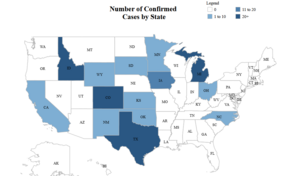Keep reading...

Dairy farms urged to keep biosecurity strong
It's always a good time to have your fundamental baseline biosecurity in order. Baseline biosecurity practices include protocols and procedures that guide day-to-day activities in and around the farm to limit the risk of disease introduction or spread, such as wearing clean clothing and footwear and separating sick animals from the healthy herd. Sometimes dairy farmers need to take the extra step and increase their biosecurity when a disease like H5N1 is circulating.
With H5N1 detections still lingering around the country, now is the time for elevated biosecurity which means taking your biosecurity up a level. It means limiting farm visitors to essential vehicles and people only, and making sure they do not go to other farms with animals that could become sick if virus is tracked along. It also means paying extra close attention to carcass disposal if you don't know the exact reason the animal died. Carcasses hauled off site should be picked up by a clean truck that hasn't come directly from another farm and the truck should be cleaned again after hauling carcasses from your farm. On dairy farms, manure, bedding and waste milk should be kept on site to avoid the risk of unknowingly spreading disease. Find additional biosecurity resources and review financial support options from the USDA.
|
The importance of accurate information during an animal health emergency
Veterinarians, farmers, and animal health officials are increasingly forced to battle misinformation and false information about animal diseases. Unfortunately, both new and existing risks to animal health are growing. The way we get information today through various social media and other digital channels often makes it hard to tell what’s true and what’s not.
Examples of misinformation include anti vaccine falsehoods, rumors about disease detections without confirmed test results, and speculation on potential sources of infection. The World Organisation for Animal Health (WOAH) noted misinformation issues surrounding diseases like Bovine Spongiform Encephalopathy, Foot and Mouth Disease, and African Swine Fever. False claims can seriously impact how veterinarians, farmers, and animal health officials respond to a disease. Domestically there were examples of misinformation last spring when H5N1 was first detected in cattle in Texas and Kansas.
To tackle these challenges we need to work together to share what we know and focus on trusted partners for clear and accurate information. Collaborating with experts and staying informed helps create effective responses to false information. On a global scale, WOAH has developed guidelines to help manage misinformation during animal health emergencies. Read the full article breaking down the gravity of accurate information from WOAH's website.
As misinformation spreads faster than ever, it’s crucial for Minnesota’s agricultural community to stay engaged in efforts to promote accurate information and educate the public. By doing so, we can better protect animal health and ensure effective disease management.
|